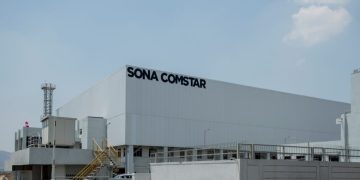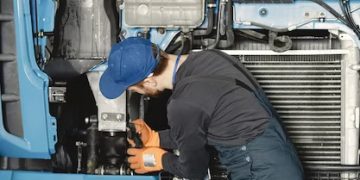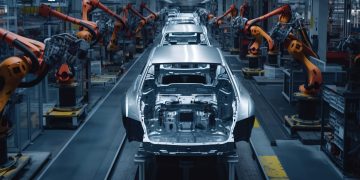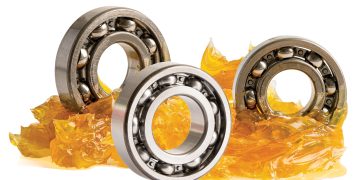Health and safety practices have already become a lifestyle or workplace hygiene for ages in matured markets. In emerging markets, it has got a long way to go. Especially if we speak of the safety risks, which are many, causing immediate and long-term defects to humans. Here we limit the health and safety measures with some fire extinguishers and hydrants, whereas the health factors are being ignored. “Health and safety are very large subjects in the automotive retail business. It is directly connected with the person’s productivity, efficiency, and utilization,” says Anso Jacob, Managing Partner & Lead Consultant, BodyshopGuru. Excerpts from his email interaction with Mahesh Kallayil.
What are the health and safety risks in the automotive repair and maintenance sector?
In the automotive repair and maintenance sector, other than the fire risks there are many factors affecting the physical and mental health of the employees. A workshop produces harmful exhausts, gases, vapours, heat, dust and sparks, metal expulsions which can cause damage to the environment, health and safety.

What are the must-have general safety precautions in a workshop?
It is generally thought that the health and safety precautions are only meant for repair technicians, but the fact is that the entire employees in the facility have to adhere to the EHS norms. Some of the key measures are as follows:
- Limiting the driving speed within the premises
- Demarking the areas for human movement and vehicles
- Proactive repair and maintenance of tools and equipment
- Availability and enforcement of personal protective equipment for the safety of the employees
- Availability and maintenance of fire extinguishers as per the ABC class
- Spark arresting devices in the painting areas
- Parking management
- Proper lighting in repair areas as per the specification
- Adequate ventilation in the shopfloor area and fresh air intake, especially in low roof workshops
- Heat insulators wherever applicable
- First Aid training by an authorized agency
- EHS compliant restrooms for the production staff
What is a safety audit? How would you go about conducting a workplace safety audit?
Safety has to be the workplace culture and it’s everyone’s responsibility. An ignorant person on the premises is a big risk.
The safety audit ensures the availability and usage of safety and health-protective measures at any given point of time. A safety policy must be made, and a protocol must be enforced.
The safety audit, for me, is not a check of what we do in regular intervals. It is ongoing, day in and day out. We recommend dividing the facility into different safety zones and assigning the responsibility of each of the facilities to a team of two people with a safety officer who monitors the zonal leaders.
The zone leaders will be ensuring the availability and usage of PPEs, and safety protocol is followed in the facility.
The safety team must be empowered to take strict disciplinary actions against the conservative/ignorant. Also, the safety champion in the facility must be appreciated and incentivized.
How did Bodyshop Guru help service managers to establish safe working conditions at workshops and body shops?
We have very high standards as safety is concerned. Because we believe that the health and safety measures are directly related to the employee retention, productivity and efficiency of the team members. During our engagement period with Bodyshops/dealerships, we create awareness right from the investor or the business owner and convince him about the benefits of effectively implementing health and safety measures in the business. Once we have the buying in from the investor, we start inculcation with the middle management and tech team/ other staff.
We have seen so far that the investor always wants to have better EHS norms in the facility, but most of them are worried about the sustainment part. Once they get confidence in the team, they invest as per the requirements.
Secondly, all our technical and management training EHS is a part of the curriculum. Also, once we enforce the correct repair methods, EHS is being followed to a great extent.
In some facilities, the floor layout itself is non–complaint with EHS. In those cases, we redesign the layout without harming the OEM guidelines and achieve the desired results.
All our consultants are well trained in EHS and we have a detailed assessment of the EHS of the facility. Any kind of non-compliance in products or process-wise will be highlighted to the right authority for immediate rectification.
What are the factors that need to consider helping protect automotive repair workers from potentially hazardous work environments?
Awareness, coaching and motivation are the keys here.
In most cases, we see the team not having adequate awareness of the health and safety hazards involved in a repair centre. Hence awareness for all the levels is highly required. Secondly, the availability of PPEs and EHS compliance for the facility needs investment and the business are seen ready for the same in most cases. Once we have the EHS compliance, each of the people must assign responsibility along with coaching.
Safety is being practiced in most of the lux segment bodyshops in India which is predominantly due to a high level of awareness and also with OEM mandates. However, the same is being overlooked or ignored in the mass-market segment.
Please elucidate to us about emergency planning
Every year in India, we are witnessing high number of fire accidents in the automotive repair facilities compared to any part of the world. Luckily very rare human casualties are reported. But in these incidents, plenty of vehicles and facilities are damaged, resulting in huge losses to the investor and customers. Also revamping a facility takes a lot of time, effort and money apart from the business and the credibility loss.
- Safety drills and demonstration of the usage of fire extinguishers – All the employees in the facility must be able to handle the firefighting equipment, be it in the back office, production floor, parking, front office or spare part storage area. Safety drills must be conducted in regular intervals and must document the same.
- First aid training including CPR – A first-aid kit with a usage chart by a certified physician must be available in the facility and location of the same must be highlighted for everyone in the facility. All the employees must undergo first-aid training including conducting CPR. Nowadays we are seeing an increase in cardiac arrest cases. A proper first-aid can save lot of lives.
- Easily accessible Assembly points – Assembly points must be demarked and everyone in the facility must be educated about the same. Also, the passages must be not obstructed at any given point in time, this will expedite the human movement and give easy access to the firefighters.
- Accessibility of electric power main switch – The location must be easily accessible and the user manual must be provided.
- Location of hazardous and volatile/organic compounds storage location – In repair shops, we store a lot of chemicals, oils and lubricants. The storage location and approximate quantity of these items must be displayed via a schematic diagram near the entrance. This will give a fair idea to the firefighters for taking precautionary measures.
- Implementing an emergency protocol and training the team on the same – Every facility must have an emergency protocol and the entire team members must be aware of the same. I would say that this must be a part of the new employee induction programme.
- Accessibility to hospitals and ambulances – The emergency contact numbers must be displayed.
- Intimation to the Fire Rescue team and Police
What health and safety measures should be considered while selecting equipment and chemicals for the workshop?
Selecting enviro-friendly chemicals is inevitable. Most of the 2k materials contain iso-cyanide and the technicians and the entire team must be aware of the same. In many places, we are seeing that the team and management are ignorant of safety and health factors. The EHS factors must be a part of the technical training for chemicals, tools and equipment. Also, the team must be aware of the by-product, emissions and expulsions. The key points are:
- Training and support
- User-friendliness
- Space occupied
- By products/emissions
How can we reduce safety and health risks through efficient workshop design?
There are a lot of things to be considered while designing a workshop, including geographical features of the location in which the workshop is situated. Also, the vehicle and people flow/ movement to be considered. In many workshops of a particular brand, I have seen the paint booth and air compressor positioned near the car washing area causing EHS risk as well as repeat jobs. The factors, I would consider are;
- Climate/temperature/Humidity
- Sunlight availability & lighting
- Wind flow & Ventilation
- Workday bay sizes as per the manufacturer and also as per the equipment
- Passages for humans and vehicles
- Storage space for hazardous materials
- Storage space for waste materials
- Fire exits
- Positioning of Electrical control units
- Aggregate rooms
- Parking bays availability/design and signages
- Road entry/exit points
What are the safety precautions you recommend for automotive painters?
Mainly the industry has a misconception that If they use water-based paint the health risk is reduced to a great extent. Many people avoid PPEs because of this. Infact, in refinishing, the base coat is only aqua-based and the rest are still solvent-based.
Not only painters, but everyone in the facility are prone to health risks. Some of them are people like Body repair technicians, supervisors, spare part teams, drivers, service advisors, and assessors. The bodyshop emits harmful gases like paint vapours, welding fumes, and the atmosphere is contaminated with sanding dust, glass particles, glass wool, vehicle exhausts, sometimes fuel vapours and what not – the list is quite big. I would recommend everyone must use PPEs once entering to bodyshop. Below are some of the activities I recommend and practice for our clients.
a. Availability and usage of PPEs – The must-have lists for reference
- Welding Helmet-Self darkening/Adjustable light intensity
- Welding Apron
- Welding Shoe Protector
- Welding Blanket
- Goggles-Transparent
- Welding Gloves
- Nitrile Gloves
- Air-fed Mask
- Cartridge Mask
- Dust Mask
- Ear Plugs
- Face Protection Screen
- Shoe Cover
- Woolen Gloves
b. On-time paint booth maintenance
c. Maintenance of dust extraction system and prep. stations
d. Paint mixing room ventilation
e. Proper hydration and having nutritious food
f. Safety assessments and drills in regular intervals
g. Training in handling hazardous materials like thinners
h. Updated information on chemicals
i. Updated information in the repair process
What are the safety precautions you recommend for other workshop employees?
- Always use PPEs
- Aware of the premises and the critical areas
- Alert all the time
- Hydration and nutrition
What are the main health and safety regulations in India?
In India, we have general guidelines on EHS under the factories act 1948 (me too surprised). Off late, some cities have started to focus on this area. The EVH regulations in the auto refinish need to be amended timely and have to be enforced.
In most developed countries, safety is a part of workplace discipline and it’s well followed. In India, apart from the government regulations, the investor or the business owner himself need to realize that the efficiency of the team is being deteriorated if not using the PPEs and about the other commercial risks.
The COVID-19 pandemic elevated the importance of Health and Safety in all sectors. What was your approach to supporting safe working conditions for workshop employees in this context?
We have no separate process other than following the guidelines which are provided by the authorities. However, we refrain from site visits. Whenever we are visiting the sites, we always ensure that whosoever we are interacting with will have a Covid-19 appropriate behavior.
With the emergence of new technologies like EVs, automated vehicles, AI etc, what are the trends you foresee in workshop EHS?
Product training and thorough repair process training are to be provided as the team is handling high-voltage electricity.
The EV industry is keeping on evolving and has already given a glimpse of the potential threats in charging, transporting and during the repairs. The workshop design and layout must have special EV bays incorporating the health and safety factors. Though it saves emissions, theoretically the carbon footprint is still biased. Also, there is very less awareness in the market about waste handling.
Sadly, we get a lot of calls from the EV selling dealerships in the PV segment on repair methods. We were surprised on realizing that the majority of the workforce are not aware of the repair protocols of EVs. I urge the OEMs to make the repair technology available to the network before launching it. Also, for AI, ADAS integrated vehicles, I feel that there has to be a regulation in terms of repair certification to prevent substandard repair which could happen with independent service providers in India. We need to go a long way in terms of enhancing the skill level of the existing workforce.



























































